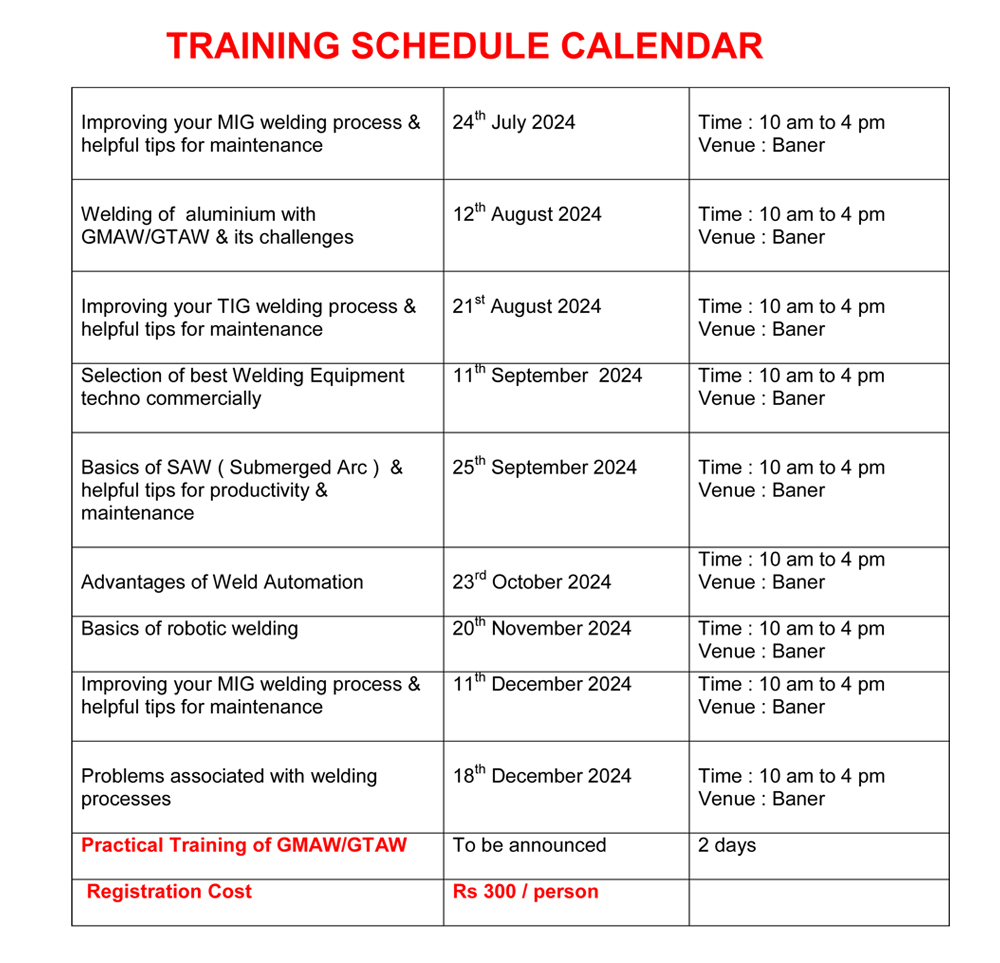Welding Basic Training Services
Basic welding training provides individuals with the fundamental knowledge and skills needed to perform welding operations safely and effectively. Whether you're new to welding or looking to enhance your skills.
Here's an outline of what basic welding training typically covers:
- Introduction to Welding:Understanding the basics of welding, including its history, importance in various industries, and common applications.
- Safety Precautions: Emphasizing safety measures and procedures to prevent accidents and injuries during welding, such as proper ventilation, personal protective equipment (PPE), fire safety, and hazard awareness.
- Welding Processes: Introducing different welding processes commonly used in industry, such as:
- Shielded Metal Arc Welding (SMAW or Stick Welding)
- Gas Metal Arc Welding (GMAW or MIG Welding)
- Gas Tungsten Arc Welding (GTAW or TIG Welding)
- Flux-Cored Arc Welding (FCAW)
- Submerged Arc Welding (SAW)
- Oxy-fuel Welding and Cutting
- Welding Equipment: Familiarizing participants with welding equipment and tools, including welding machines, electrodes, filler metals, gas cylinders, welding torches, and accessories.
- Weld Joint Preparation: Understanding different types of weld joints, joint geometry, and preparation techniques to ensure proper fit-up and welding quality.
- Welding Techniques and Positions: Learning various welding techniques and positions, such as:
- Flat, horizontal, vertical, and overhead welding positions
- Push and pull techniques
- Weaving, stringer, and whip techniques
- 7.Welding Procedures: Following welding procedures and standards to achieve quality welds, including:
- Welding parameters (voltage, current, wire feed speed, travel speed)
- Pre-weld and post-weld inspections
- Weld quality criteria (penetration, fusion, undercut, porosity)
- Hands-on Practice: Providing hands-on training and practice sessions to develop welding skills, gain confidence, and improve technique under the supervision of experienced instructors.
- Troubleshooting and Maintenance: Identifying common welding defects and issues (e.g., lack of fusion, spatter, undercut) and learning troubleshooting techniques to address them. Understanding basic maintenance procedures for welding equipment and accessories.
- Certification and Qualification: Discussing welding certification and qualification requirements, industry standards (e.g., AWS, ASME), and the importance of continuous learning and skill development in the welding profession.
Basic welding training programs may vary in duration and depth depending on the specific curriculum, instructor expertise, and learning objectives. However, they generally aim to provide participants with a solid foundation in welding theory, practical skills, and safety practices to prepare them for entry-level welding positions or further advanced training in specific welding processes or applications.


